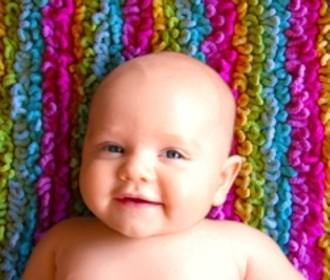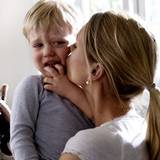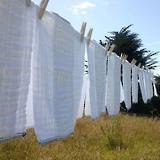Reducing the risk of SIDS
|
Is your baby sleeping safely or is your baby at risk to Sudden Infant Death Syndrome (SIDS)? In New Zealand, SIDS is one of the leading causes of death among babies who are 1 month to 12 months old. It claims the lives of around 45 babies each year in this country. Find out how you can prevent and help reduce the risk of SIDS happening to your baby.
|
You might also be interested in ...
Managing parents separation anxiety
It’s not uncommon for young children to suffer from separation anxiety, but parents separation anxiety is common too, especially when it comes to leaving their little one for the first few times. Check out these tips on how to manage separation anxiety and make leaving your child a little bit easier.
Dealing with nappy rash
At some point most babies get a touch of nappy rash, a red blotchy and sometimes spotty and sore, area in their nappy area. Sometimes the whole area is affected and at others times it may only appear in one area. We take a look at some of the causes of nappy rash and some tips on how to deal with it.







In New Zealand, SIDS is one of the leading causes of death among babies who are 1 month to 12 months old. It claims the lives of around 45 babies each year in this country.
Find out how you can prevent and help reduce the risk of SIDS happening to your baby.
Reducing the risk of SIDS
What is SIDS?
SIDS is defined as the sudden death of an infant which remains unexplained after a thorough case investigation, including performance of a complete autopsy, examination of the death scene and review of the clinical history.
SIDS is therefore a diagnosis of exclusion, affixed only once all known and possible causes of death have been ruled out.
Although research has not yet uncovered the cause of SIDS, it has identified risk factors associated to when and how babies are sleeping and ways parents can help reduce the risk of SIDS happening to their child.
In 2010, a Sydney forum of scientific researchers reaffirmed five key points for safe sleeping.
Following a large US study and publication on breastfeeding, the SIDS and Kids National Scientific Advisory Group in Australia has now added a sixth point to the list – breastfeeding.
6 Ways parents can help reduce the risk of SIDS
The six key points that highlight ways parents can help reduce the risk of sudden unexpected infant death are:
1. Sleep your baby on their back from birth
Sleeping your baby on their back from birth, not on their tummy or side, helps reduce the risk of Sudden Unexpected Deaths in Infancy (SUDI).
The chance of babies dying suddenly and unexpectedly is greater if they sleep on their tummies or sides. Put your baby on the back to sleep from birth on a firm, flat surface.
If their doctor or nurse advises you to use another sleep position for your baby, make sure the reason is fully explained to you and ask your doctor for a written explanation. These situations are very rare.
2. Sleep your baby with their head & face uncovered
Your baby’s face and head needs to stay uncovered whilst they’re sleeping as this reduces the risk of SIDS.
Keep their head uncovered whilst they are inside, no head coverings including bonnets, beanies, hoods and hats.
A good way to do this is to put your baby’s feet at the bottom of their cot so that they can’t slip down under their blankets.
Or instead of using blankets, you may choose to use a safe baby sleeping bag to keep them warm. One with a fitted neck and arm holes and no hood.
3. Keep your baby smoke free before & after they’re born
Cigarette smoke or smoke from tobacco and marijuana harms babies before and after their birth and increases the risk of SIDS.
Parents who smoke during pregnancy and after the baby is born increase the risk of sudden infant death for their baby.
In fact, if a mother smokes during pregnancy the risk of sudden infant death is approximately four times greater compared to the risk for non-smokers. If the father smokes, the risk of sudden death is almost double.
4. Provide a safe sleeping environment night & day
To be able to sleep safely and to help reduce the risk of SIDS, babies need a safe cot, safe mattress, safe bedding and a safe sleeping place night and day.
- Safe cot
Check the cot meets current New Zealand Standards and carries a label to say so.- Safe mattress
Is the cot mattress the right size for the cot and is it firm and clean?A baby can get stuck in the gaps between the mattress and the cot sides if it’s too small.
This is especially dangerous if their face is trapped and covered, or their neck is restricted in any way.
Make sure there is no more than 20mm (less than 1 inch) gap between the mattress and the cot sides and ends.
- Safe bedding
Is the bedding safe? Remove pillows, duvets, loose bedding or fabric, cot bumpers and soft toys from the cot.Soft and puffy bedding in the cot is unnecessary and may cover your baby’s face and obstruct their breathing.
If you wrap or swaddle your baby, do not cover your baby’s head.
Discontinue the use of a wrap when your baby can roll from their back to their tummy and to their back again.
- Safe sleeping place night and day
Never leave your baby unattended on an adult or child’s bed. Waterbeds, bean bags, pillows and cushions are also not safe for babies.Avoid falling asleep with the baby on a couch, sofa or chair.
Keep the cot away from hanging cords such as blinds, curtains, electrical appliances or mobiles. Keep heaters or electrical appliances well away from cots too.
Never use electric blankets, hot water bottles or wheat bags for babies.
5. Room-sharing with your baby
Research suggests sleeping your baby in their own safe sleeping place in the same room as an adult care-giver for the first 6 to 12 months.
Room-sharing with a baby has been shown to reduce the risk of SUDI.
6. Breastfeeding your baby if you can
Breastfeeding has been shown to reduce infant illness and death worldwide. The evidence that breastfeeding has a protective effect against SUDI has been gathering over many years.
Recent studies examining the role of breastfeeding in reducing SUDI show that there is now strong evidence that breastfeeding your baby reduces the risk of sudden and unexpected infant death.
For more information, visit SIDS New Zealand and the Ministry of Health website.
More baby articles to enjoy:
- Benefits of baby massage
- Flat head syndrome
- 5 Tips on how to look after your baby's skin
Image source: kidsonthecoast.com.au